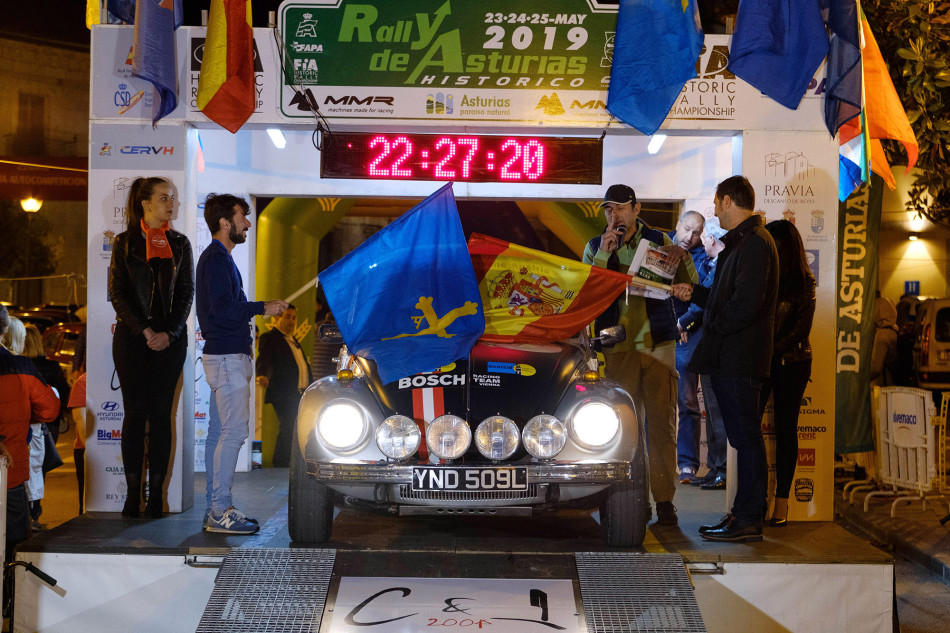EHRC - Introducing the Rally de Asturias Historico
Round 6 of the 2021 FIA European Historic Rally Championship will be held in Spain with the Rally de Asturias Historico being the host event (2-4 September). The event in Asturias was originally planned for May this season but, due to the Covid-19 restrictions, it was rescheduled for September to allow the event to go ahead.
The rally in Asturias will be the first of two trips to the Iberian Peninsula, with the 69th Rally Costa Brava based in Girona hosting the season finale in November.

SCHEDULE
The ceremonial start will take place at Parque Sabino Moutas, PRAVIA on Thursday 02 September from 20h00.
Leg 1 will consist of five special stages, with SS 1 (Agones) starting at 14h44 on Friday 03 September. Leg 1 will conclude at 19h05.
Leg 2 will also feature seven special stages, with SS6 (Soto Del Barco) starting at 11h17 on Saturday 04 September.
The podium ceremony will take place at Parque Sabino Moutas, PRAVIA from 21h15
CLICK HERE for the event timetable
CLICK HERE for the event website
FACTS AND FIGURES
| Number of special stages | 12 |
| Number of legs | 2 |
| Total distance of the course including the special stages | 310.89 km |
| Total distance of the special stages | 147.44 km |
| Total distance of special stages Leg 1 | 63.53 km |
| Total distance of special stages Leg 2 | 83.17 km |
| Interval between cars | 1 minute |
RALLY HQ
HOTEL LA CASONA DEL BUSTO
Address: C/Rey Don Silo 1, 33120 PRAVIA
Tel: +34 688 91 62 43
GPS coordinates: 43°29’21.52”N 6°06’38.95”W
PRIZE GIVING
Start / Finish Podium at Parque Sabino Moutas, PRAVIA on Saturday 4 September from 21h15
ENTRY LIST
A total of 39 cars are entered for the 2021 Rally de Asturias Historico, with a small contingent of EHRC eligible cars among them.
CLICK HERE for more on the entry list for the Rally de Asturias Historico

ABOUT THE PRINCIPALITY OF ASTURIAS
The Principality of Asturias is an autonomous community in north-west Spain and is divided into eight comarcas or counties. Asturias contains some of the territory that was part of the larger Kingdom of Asturias, with Pravia being the capital city.
With the beginning of the Moorish conquest in the 8th century, the region became a refuge for Christian nobles and in 722, a de facto independent kingdom was established, the Regnum Asturorum, which was to become the cradle of the incipient Reconquista (Reconquest).
Today Asturias is bordered by Cantabria to the east, by Castile and León to the south, by Galicia to the west, and by the Bay of Biscay to the north. The most important cities are the communal capital, Oviedo, the seaport and largest city Gijón and the industrial town of Avilés.
The key features of Asturian geography are its rugged coastal cliffs and the mountainous interior.
The Cantabrian Mountains (Cordillera Cantábrica) form Asturias's natural border with the province of León to the south. In the eastern range, the Picos de Europa National Park contains the highest and arguably most spectacular mountains, rising to 2,648 metres (8,688 ft) at the Torrecerredo peak.
Other notable features of this predominantly limestone range are the Parque Natural de Redes in the central east, the central Ubiñas south of Oviedo, and the Parque Natural de Somiedo in the west.
The Asturian coastline is extensive, with hundreds of beaches, coves and natural sea caves.
The climate of Asturias is heavily influenced by the gulf stream with mild summer temperatures.
CLICK HERE for more information on Asturias on the official Spanish Tourism website

 Facebook
Facebook Twitter
Twitter






